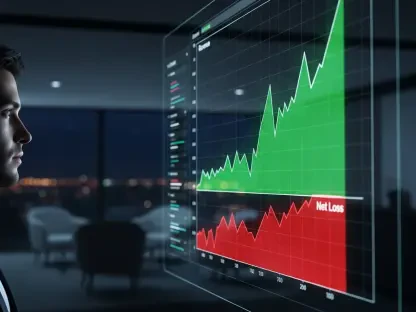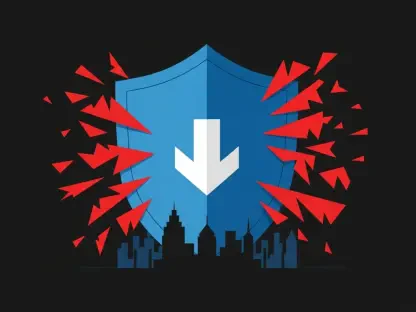In an era where critical infrastructure faces unprecedented challenges from cyber threats to climate change, the ability to safeguard assets and ensure financial stability has never been more vital. A European organization operating in this sector recently embarked on a transformative journey to overhaul its risk management and insurance strategies, revealing the profound impact of advanced analytics. Faced with growing concerns over outdated practices and inefficiencies, the entity sought to modernize its approach, aiming to protect its operations while gaining the trust of stakeholders like investors and business leaders. This compelling case offers a glimpse into how data-driven solutions can address complex vulnerabilities, providing a blueprint for others in the industry. By leveraging cutting-edge tools, the organization not only uncovered significant cost savings but also positioned itself to navigate future uncertainties with greater confidence, setting a new standard for resilience.
Revolutionizing Risk Management with Data-Driven Insights
Harnessing Analytics for Strategic Decision-Making
The journey to modernize risk management began with a critical need to shift from traditional, static methods to a more dynamic, evidence-based framework. Engaging specialized consulting services, the organization adopted the Connected Risk Intelligence (CRI) platform to conduct a comprehensive assessment of its risk profile. This process involved in-depth discussions with key personnel, including the chief information security officer and chief risk officer, to gather a blend of quantitative and qualitative data. Actuarial analysis delved into claims history, exposure details, and policy structures to quantify risks and evaluate the true value of existing insurance coverage. The result was a clearer understanding of where resources were being over-allocated and where gaps in protection existed. This analytical approach challenged long-held assumptions, paving the way for more informed decisions that balanced risk retention with insurance needs, ultimately enhancing financial stability across the board.
Uncovering Cost Savings Through Precision
Beyond simply identifying risks, the CRI platform delivered actionable insights that translated into tangible financial benefits for the organization. A striking revelation from the analysis was the potential for a 14% reduction in costs related to insurance and risk management. By examining seven distinct risk classes, the assessment found that four offered good value, while three presented opportunities for optimization. One particular line of coverage was deemed overpriced, leading to the decision to self-insure in that area, freeing up resources for more pressing needs. This nuanced evaluation allowed for a strategic reallocation of funds, ensuring that protection was prioritized where it mattered most. The precision of analytics not only highlighted inefficiencies but also provided a roadmap for achieving a more balanced and cost-effective risk strategy, demonstrating the power of data in transforming financial outcomes for critical infrastructure entities.
Addressing Emerging Threats with Targeted Solutions
Prioritizing Climate Risk Mitigation
Among the most pressing concerns for critical infrastructure today is the growing impact of climate change, and the organization’s risk assessment brought this issue into sharp focus. Through advanced modeling within the CRI platform, two key locations were identified as being at high risk for substantial losses due to environmental factors. This finding was a wake-up call, prompting targeted recommendations to bolster mitigation efforts in those areas. Whether through infrastructure upgrades or revised operational protocols, the emphasis was on proactive measures to minimize potential disruptions. The clarity of these insights enabled decision-makers to allocate resources effectively, ensuring that vulnerabilities were addressed before they could escalate into costly crises. By integrating climate risk into the broader risk management strategy, the organization took a significant step toward safeguarding its long-term operational resilience against an increasingly unpredictable natural environment.
Building Stakeholder Confidence with Transparency
Another critical outcome of the analytics-driven approach was the enhanced transparency it brought to risk management practices, which proved invaluable in strengthening stakeholder trust. The detailed reporting generated by the CRI platform offered investors and financiers a clear view of how risks were being assessed and managed, dispelling uncertainties that often accompany traditional methods. This openness was particularly well-received by external parties, who appreciated the modernized framework and the confidence it instilled in the organization’s ability to handle future challenges. Internally, business leaders gained a deeper understanding of risk priorities, fostering alignment across departments. The emphasis on clear, data-backed communication underscored the importance of trust in maintaining strong relationships with all stakeholders, positioning the organization as a leader in adopting forward-thinking strategies to protect critical assets in a complex risk landscape.
Reflecting on a Path to Resilience
Lessons from a Transformative Journey
Looking back on this European organization’s experience, the adoption of advanced analytics through the Connected Risk Intelligence platform marked a turning point in its approach to risk management. The 14% cost reduction achieved stood as a testament to the value of precision and evidence-based strategies in uncovering hidden inefficiencies. Beyond financial gains, the focus on climate vulnerabilities at specific locations ensured that resources were directed where they were most needed, fortifying the entity against environmental threats. This case highlighted how a departure from outdated practices could yield immediate benefits while laying the groundwork for sustained stability, offering a powerful example for others in the sector to follow.
Charting the Next Steps for Industry-Wide Impact
As the dust settled on this initiative, the broader implications for critical infrastructure became evident, pointing to actionable paths forward. Entities across the industry were encouraged to explore similar data-driven optimizations, tailoring solutions to their unique risk profiles. Investing in platforms like CRI could unlock not just cost savings but also a deeper understanding of emerging threats, from cyber risks to natural disasters. Collaboration with consulting experts and internal stakeholders alike would be key to replicating such success, ensuring that transparency and strategic balance remained at the forefront. This journey served as a reminder that embracing analytics was not merely a trend but a necessary evolution, equipping organizations to face future uncertainties with robust, informed strategies.









